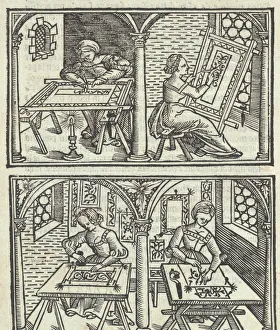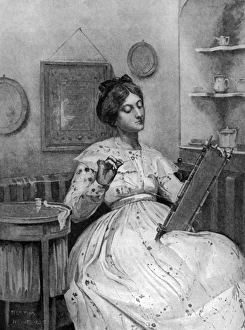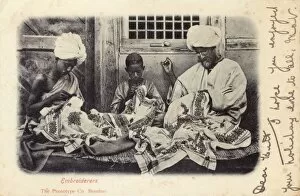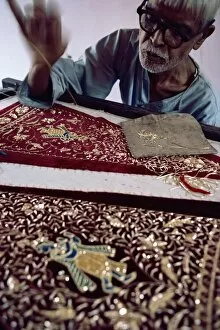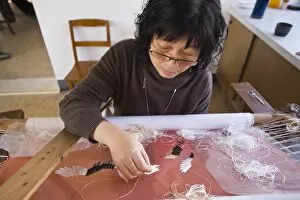Embroidering Collection (page 3)
Embroidering has been a cherished art form throughout history, with its intricate designs and delicate craftsmanship capturing the imagination of generations
All Professionally Made to Order for Quick Shipping
Embroidering has been a cherished art form throughout history, with its intricate designs and delicate craftsmanship capturing the imagination of generations. From Irish Cottage Industries to Hand Embroidery on Linen in the Ar, this timeless technique has left an indelible mark on our cultural heritage. In an advertisement from around 1900, we catch a glimpse of the exquisite beauty that embroidery brings to everyday life. The lithograph showcases Penelope Embroidering, her skilled hands meticulously weaving threads into a work of art, and is a testament to the dedication and patience required for this craft. Lace Making - one of the last three processes involved in embroidery - reveals yet another facet of this ancient tradition. As women deftly manipulate their bobbins, they create intricate patterns that adorn garments and add elegance to any ensemble. Traveling back in time, we witness two ancient Greek women engrossed in their embroidery. Their nimble fingers bring life to fabric as they stitch stories onto cloth, preserving tales for future generations. Johann Sibmacher's Schon Neues Modelbuch from 1597 showcases elaborate embroidery patterns that were highly sought after during his time. These designs served as inspiration for countless artisans who sought to embellish clothing and accessories with their own unique touch. Moving forward through history, we encounter Preparations for the Celebration captured by an oil painting on canvas dating back to 1867. Amidst all the hustle and bustle surrounding festivities, a woman sits serenely embroidering Christmas decorations – her needle gracefully dancing across fabric as she infuses love into every stitch. Portraits also pay homage to those who dedicated themselves to this art form. An unknown lady from c. 1500-53 delicately holds her embroidery hoop while Elizabeth Simpson Lady Bridgeman (1735-1806) proudly displays her handiwork in stunning detail. Even men found solace in embroidering, as seen in the portrait of Colonel the Hon.





